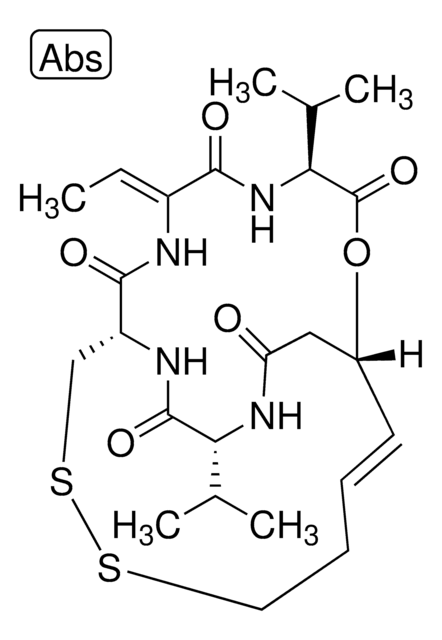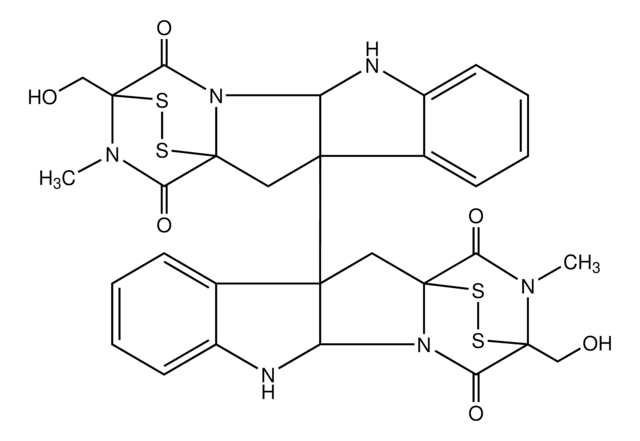S8825
Salermide
≥98% (HPLC)
Synonyme(s) :
N-{3-[(2-Hydroxy-naphthalen-1-ylmethylene)-amino]-phenyl}-2-phenyl-propionamide
About This Item
Produits recommandés
Niveau de qualité
Pureté
≥98% (HPLC)
Forme
powder
Conditions de stockage
desiccated
Couleur
yellow
Solubilité
DMSO: >10 mg/mL
Température de stockage
2-8°C
Chaîne SMILES
CC(C(=O)Nc1cccc(c1)\N=C\c2c(O)ccc3ccccc23)c4ccccc4
InChI
1S/C26H22N2O2/c1-18(19-8-3-2-4-9-19)26(30)28-22-12-7-11-21(16-22)27-17-24-23-13-6-5-10-20(23)14-15-25(24)29/h2-18,29H,1H3,(H,28,30)/b27-17+
Clé InChI
HQSSEGBEYORUBY-WPWMEQJKSA-N
Application
Actions biochimiques/physiologiques
Caractéristiques et avantages
Produit(s) apparenté(s)
Code de la classe de stockage
11 - Combustible Solids
Classe de danger pour l'eau (WGK)
WGK 3
Certificats d'analyse (COA)
Recherchez un Certificats d'analyse (COA) en saisissant le numéro de lot du produit. Les numéros de lot figurent sur l'étiquette du produit après les mots "Lot" ou "Batch".
Déjà en possession de ce produit ?
Retrouvez la documentation relative aux produits que vous avez récemment achetés dans la Bibliothèque de documents.
Articles
Epigenetic modifications are thought to occur through two key interconnected processes—DNA methylation and the covalent modification of histones.
Notre équipe de scientifiques dispose d'une expérience dans tous les secteurs de la recherche, notamment en sciences de la vie, science des matériaux, synthèse chimique, chromatographie, analyse et dans de nombreux autres domaines..
Contacter notre Service technique








